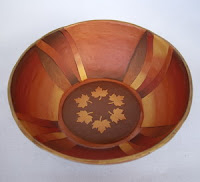To expand my range of HANGAs in both surface decoration and shape, and to find more sales outlets – I have experimented with many different types of surface decoration and did try out some heart and square shaped HANGAs as well as the original circular shape. I have continued to sell my HANGAs through Craftworld (Westgate) but apart from trying Etsy.com on-line, have still only sold them through craft markets. I have not pursued other outlets, as I intend to wind down production next year, to concentrate on teaching workshops/classes.
Open an Etsy shop to sell my HANGAs, and other pieces of polymer clay art/craft work, to a wider audience – My Esty shop was launched on 1 August, however, I feel a lot more study is required to make this method work for selling, when so many others are selling through the same site. Next year, I may try www.trademe.co.nz (New Zealand website similar to Ebay) but I much prefer the physical interaction with customers at the markets/fairs, than waiting for an on-line sale.
To create some polymer clay mosaic artwork. (This was my original reason for trying this medium, which has somehow got lost as the Art-Brooches and HANGAs developed, when I had less time for creative work) – I have created several polymer clay mosaic pieces that I am proud of and have ideas for many more, which will gradually become realised as time permits.To get some polymer clay art/craft work in a few selected galleries, to establish some credibility here in New Zealand – I have exhibited polymer clay work twice in the gallery at the Mairangi Arts Centre. Next year I will need to look at other galleries, particularly as the New Zealand Art Guild, with its exhibiting opportunities, sadly closed down last week.
HOPING 2012 IS A PROSPEROUS YEAR FOR EVERYONE, ESPECIALLY THE POLYMER CLAYER ARTISTS AROUND THE WORLD









































